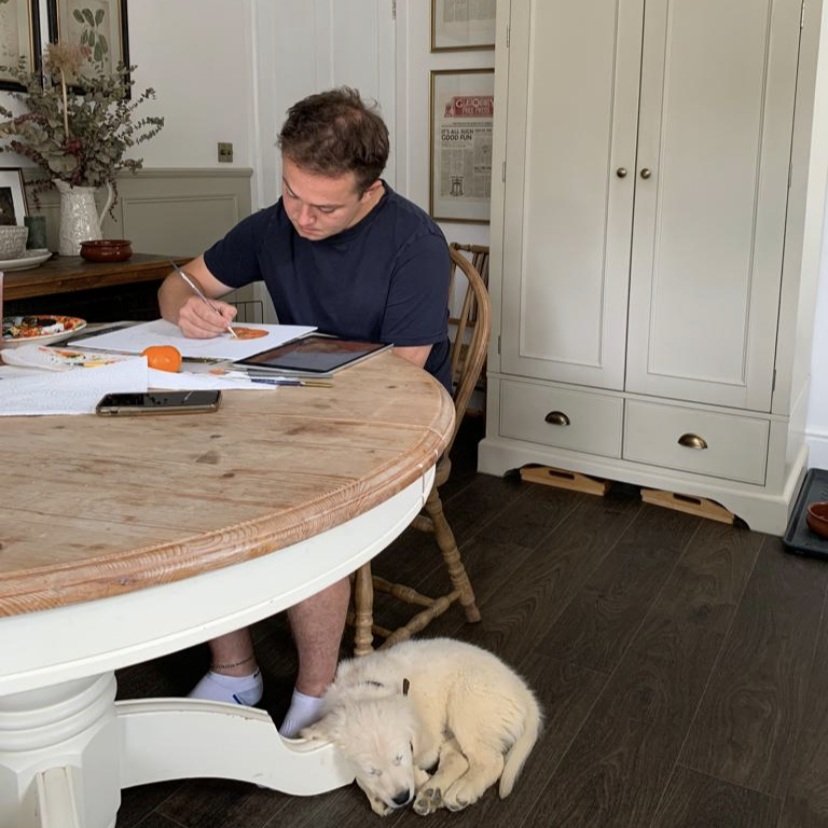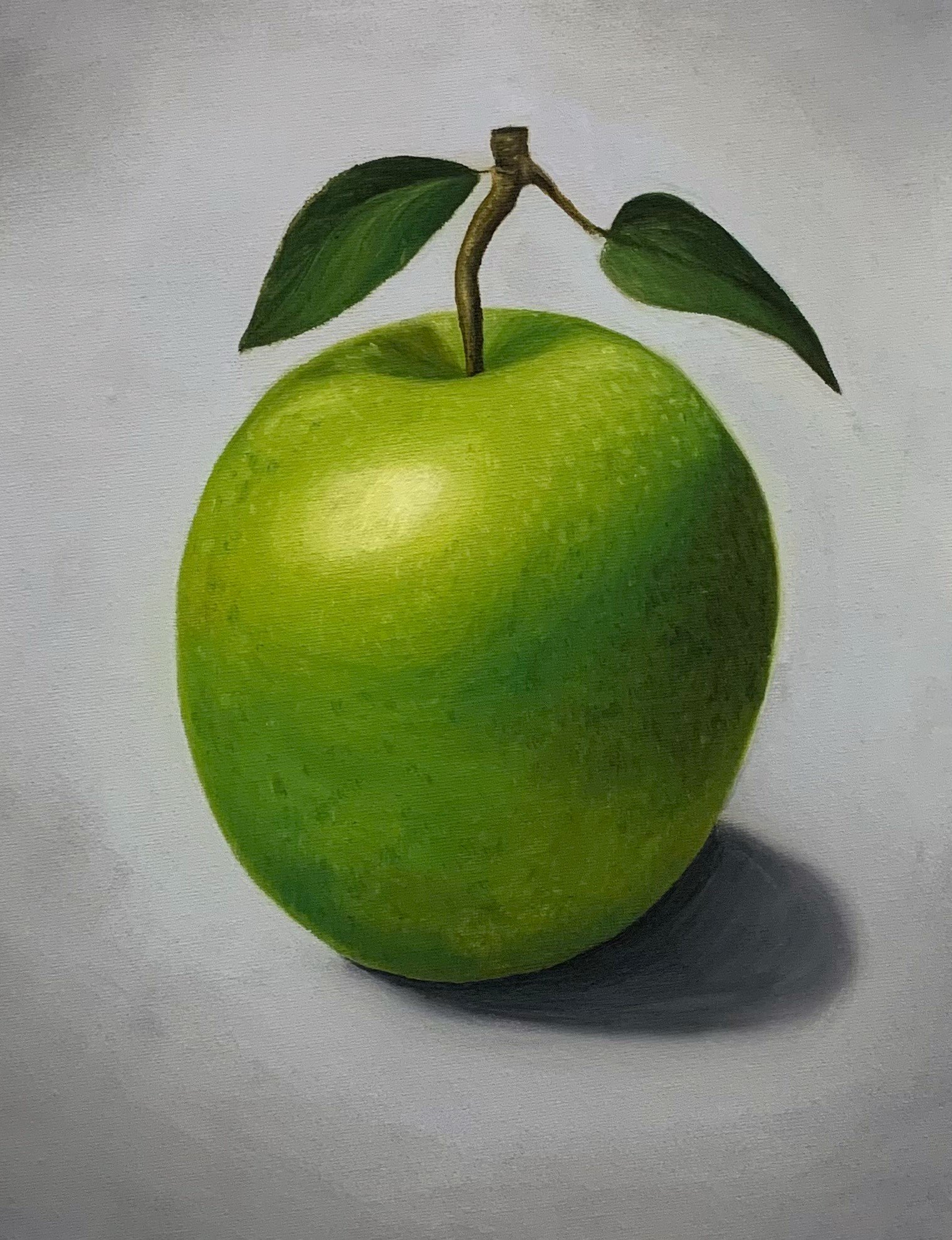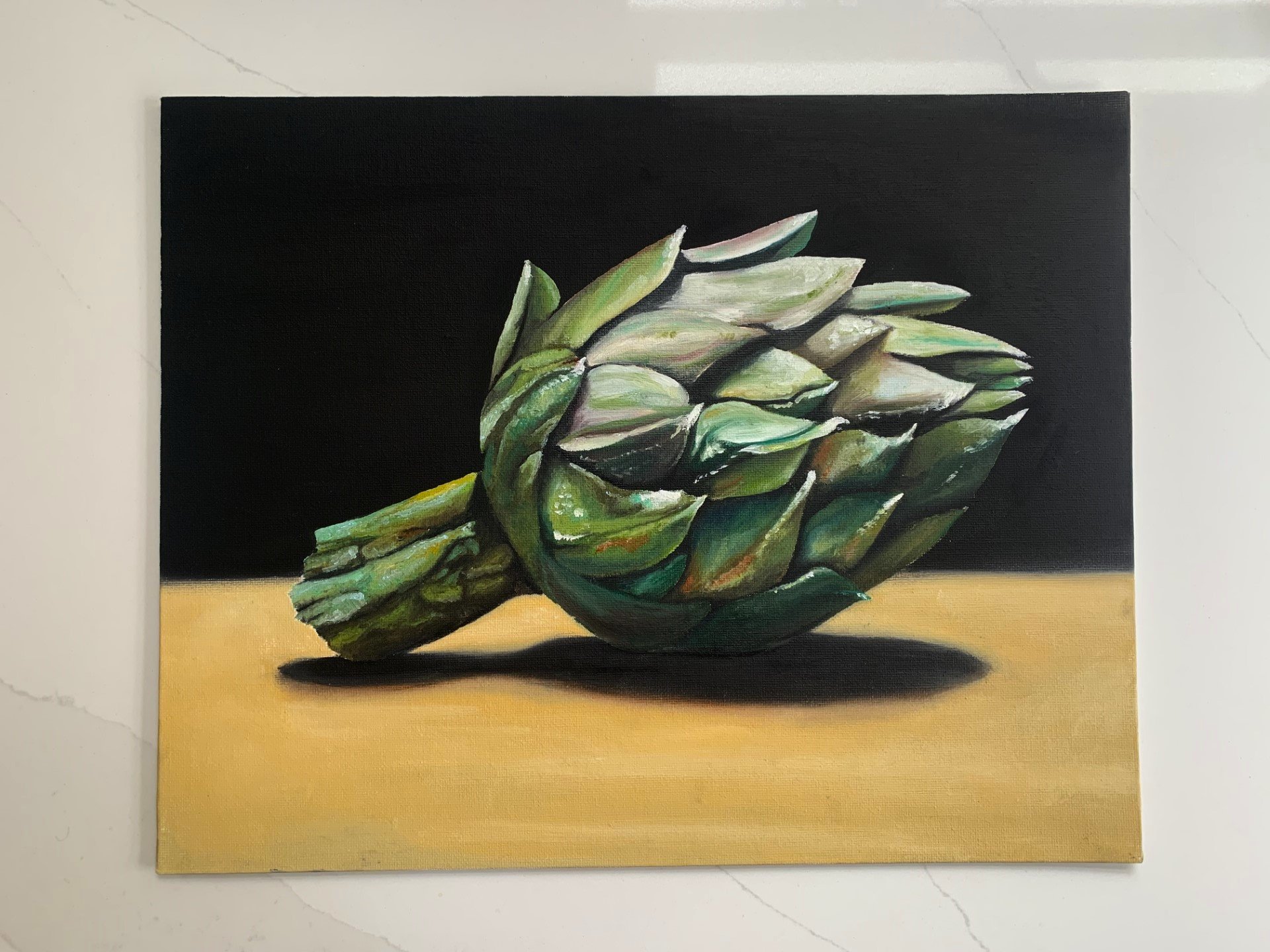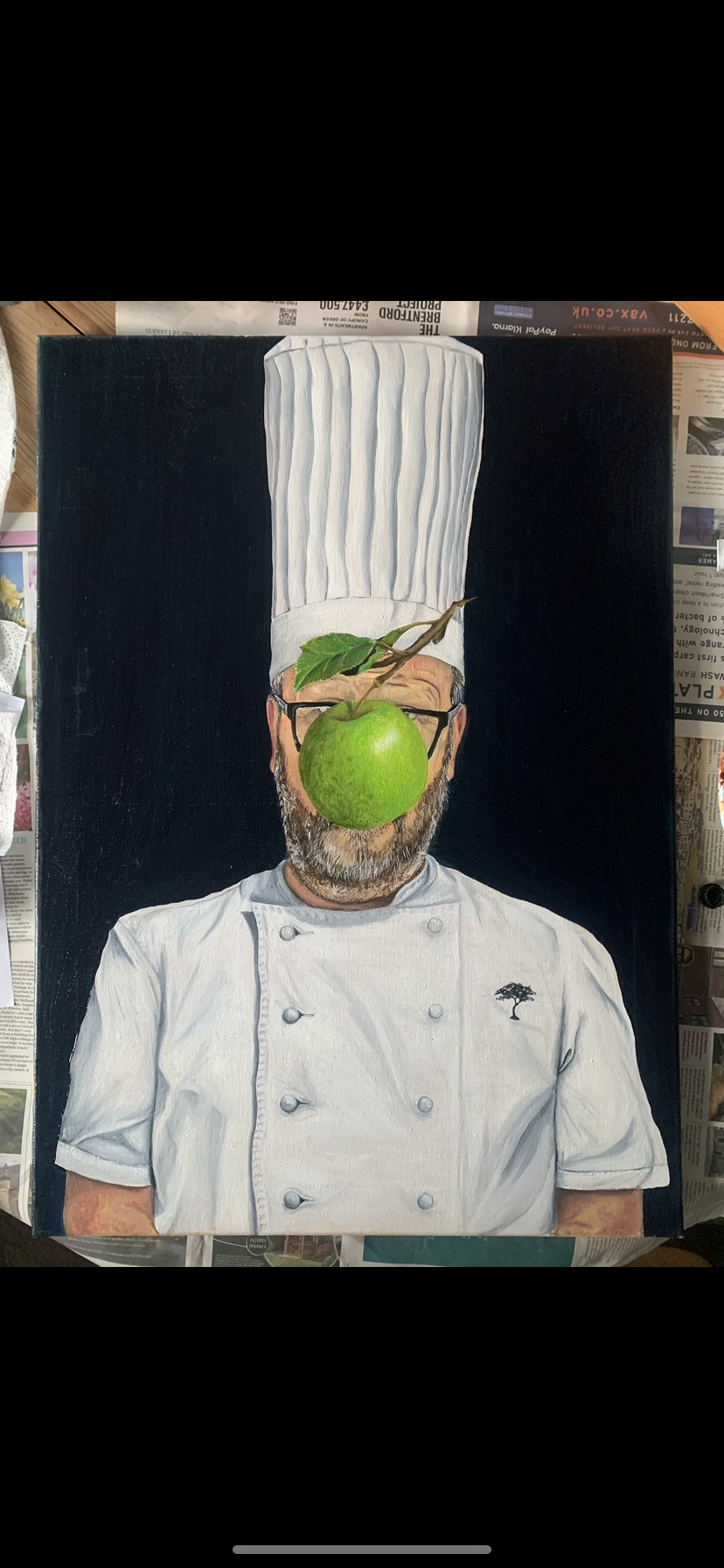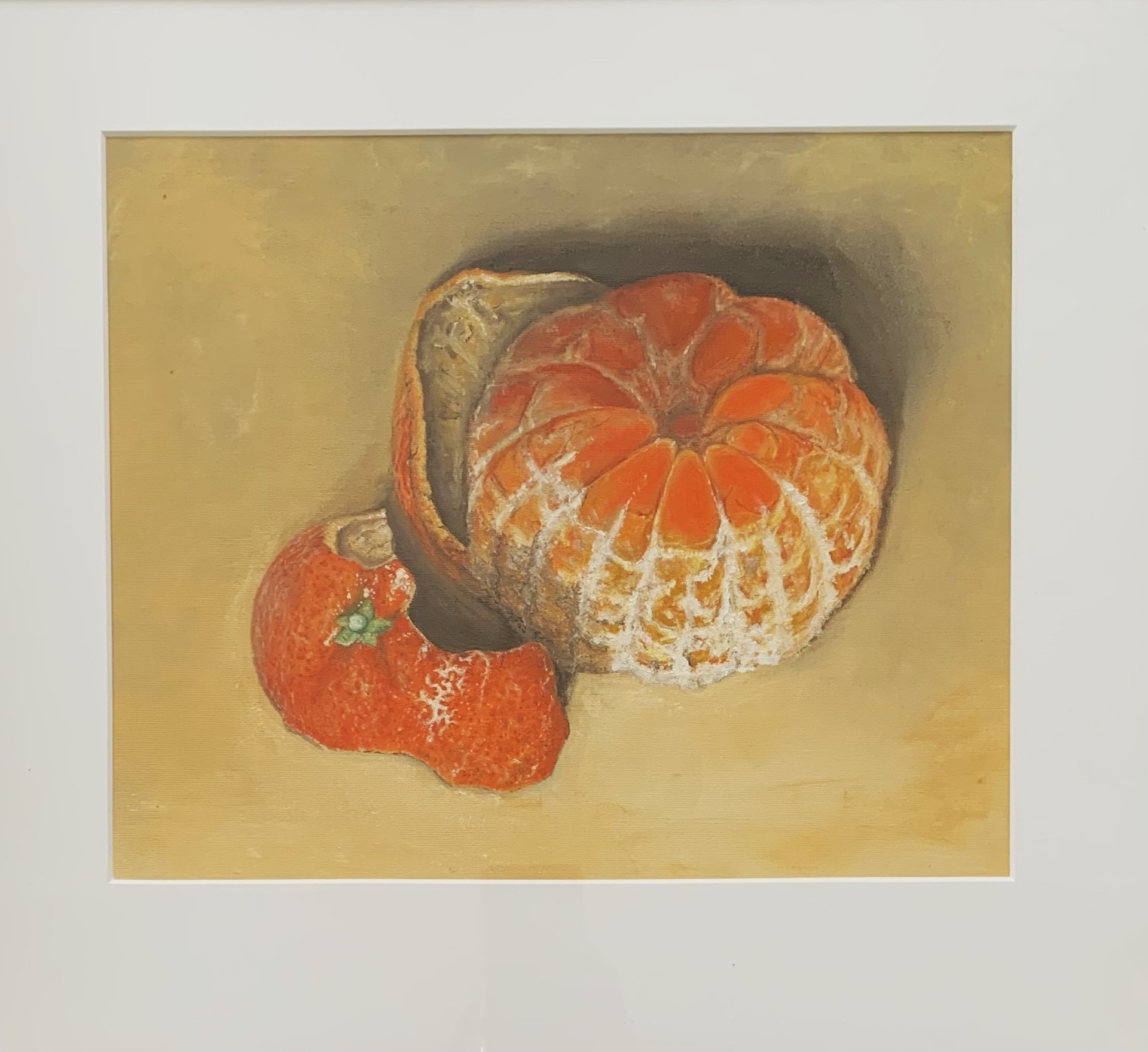ARTIST INTERVIEW: ALEX HILTON
Alex Hilton
Please introduce yourself. How have you developed your passion for art into a career?
Hi, my name is Alex Hilton and I live in the village of Fen Ditton, just a 20 minute walk to the city of Cambridge along the river Cam. I am an artist whom specialises in still life paintings, particularly in the medium of oil. Art has always been something I was interested in from as early as I can remember. Childhood Christmas/birthday presents always consisted of wanting pencils, paint and pens to draw anything and everything I could imagine. Not much has changed there, except they're a lot more expensive than the typical Crayola sets I used to receive (other brands are available). School was always a battle between science vs art and at the time, science was the safer career option for me. That being said, I never stopped painting and its only since August last year, when the arrival of our first child (Albus the Golden Retriever) gave me some 'Paw-ternity leave' and allowed me to reflect on turning something of a "talent" into a career.
What initially drew you to paint still life?
Still life, landscapes and portraiture are all the genres of painting and drawing I have practiced over the years and so deciding what I wanted to specialise in was quite tough. However, it was a mere waxy lemon on the counter top of the kitchen, glistening in the sun that made me think, "THATS IT! I want to paint that!". Many people believe still life can be quite simple and boring but I think quite the opposite. If you’re reading this and near a fridge, cupboard or pantry, grab a single piece of fruit/veg and shine a light on it. What do you see? It’s the multitude of varying colours, textures, patterns and the way light interacts with shadows on these simple objects that has drawn me to paint still life.
What are the characteristics of an interesting subject to paint? Why in particular are you drawn to Fruit and Vegetables?
Texture! This is something I am trying to emulate in every piece I do and also why I would never consider myself a photo-realist artist. I like it to be realistic from afar, but when you get up close to the paintings, I want individual brush strokes and blending to be visible in each piece. Thicker strokes give more harsh/woody/crispy lines like you would see in asparagus stem or a fried egg, whereas smoother blending can give texture of glass or the surface of an apple. Fruit and Vegetables are currently the mainstay of my work to date, but that's just because I like the simplicity of one object showcasing how textures, vibrant and colourful they can be. I will be expanding my work and subjects soon, so watch this space.
Describe your process for creating one of your pieces. Do you paint from life or from a photograph? How do you establish the composition?
Composition and angles of light are very important when creating my pieces. I will set up my subject and position a light in a way that creates a casting shadow, as this will bring variation and depth to the painting. Using 'Easy Peeler' as an example, I peeled the orange and had a number of different pieces surrounding the orange. I took over 50 different photos with varying angles of light until I decided on the right one. I will then paint from the reference picture for close up details and real life for overall subject analysis.
Easy Peeler
You have an exciting collaboration with Midsummer House; a high end restaurant in Cambridge. How did this opportunity arise? Tell me about the work you have created for them.
So I emailed Daniel Clifford, Chef Patron of Midsummer House with the proposition of "why not show off mere humble ingredients in an extraordinary way, on the walls as well as on the plate" of his establishment. Time and time again, when I go out to eat in restaurants in the UK, there is never anything relating to what's on the plate, which I think is a missed opportunity for an immersive experience. Also, high end fine dining can be showcased in a way where food and ingredients are not in their natural form or they're ingredients people have never heard of/know what they look like. This is why our new collaboration of work will offer something unique to guests, where my paintings will describe certain dishes in a vibrant and literal way. So far, I have created a portrait of chef Daniel, inspired by the painting 'The Son of Man' by Rene Magritte, three still life paintings that showcase ingredients of their favourite dish and a large study of Jerusalem Artichokes (above ground in their flower form and below ground in their purple tuber form). Who knew they looked like purple potatoes? well I didn't until I was commissioned for the painting. I currently have another four commissions in the pipeline and hopefully a continued collaboration for the future.
Who is your greatest artist inspiration?
Firstly, my school art teachers Mrs Mochan and Mrs Grant, whom tirelessly pushed me to pursue art and design after A-levels and are hands down, the people who really validated my work in the early years. Secondly, it will have to be one of the great Deutch still life painters, Clara Peeters. Her composition and use of light and shadow is for me, the embodiment of my work and something I aspire to achieve every time.
Has there been a pivotal point in your career so far as an artist? What are your future aspirations?
As a relative newcomer to the professional world of art, I haven't yet had a pivotal point in my career. To create commissions for establishments such as Midsummer House is a 'pinch yourself' moment and to continue on the trajectory I have started will be something I will be proud of. At the moment I am just getting my work out there and showcasing it at galleries, exhibitions and events, with affordable and accessible options which include my limited edition prints of each painting. I think its important to remove any prestige or stuffiness that art can bring, so anyone can own and enjoy something that is special and not mass produced, all whilst not breaking the bank.
Why do you think art is important in society?
Art brings something different to the mundane and the ordinary. As we are entering a time where AI and computer generated images can be produced at the click of a button, I think its important to remember the history of society. All would not be, without art. The first forms of communication/expression in cave walls to the advancements of human medicine with anatomical drawings. Most things have derived from art or design and so, keeping that alive moving into the computer generated world is something special and humbling to be apart of.


